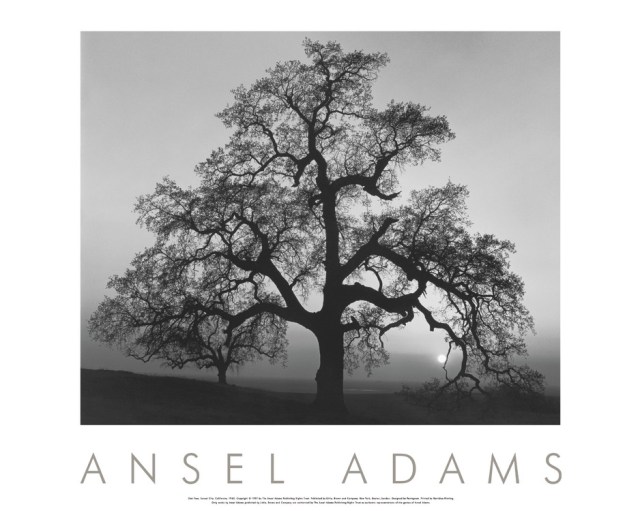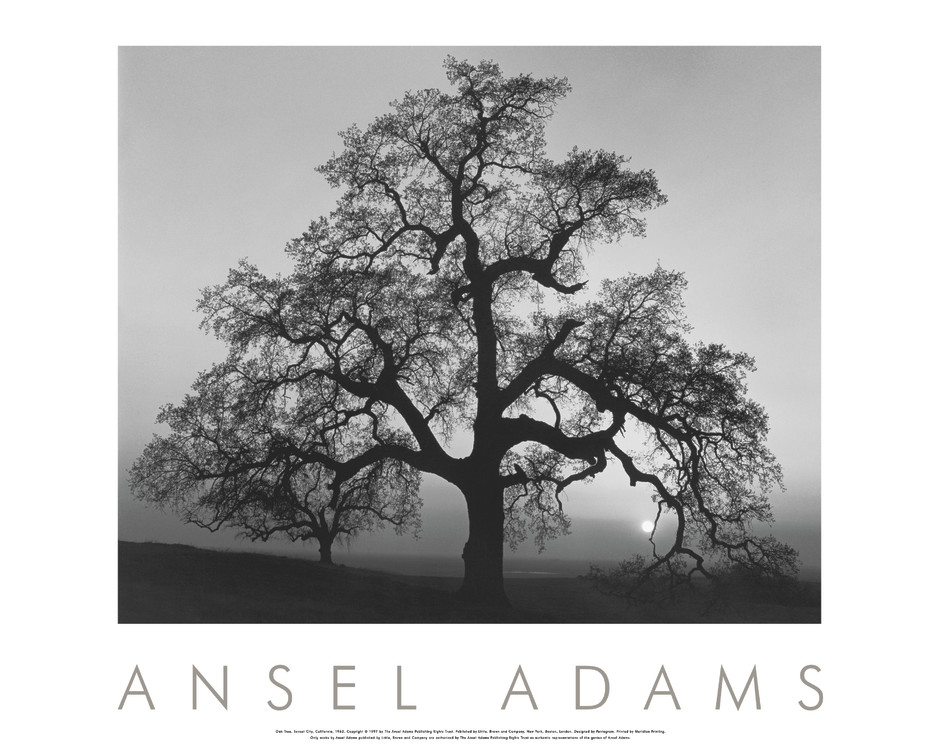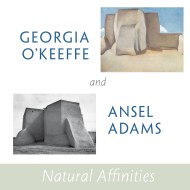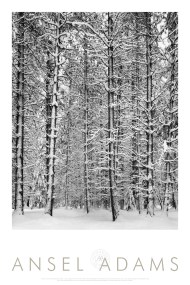By clicking “Accept,” you agree to the use of cookies and similar technologies on your device as set forth in our Cookie Policy and our Privacy Policy. Please note that certain cookies are essential for this website to function properly and do not require user consent to be deployed.
Oak Tree, Sunset City, California 1932
Contributors
By Ansel Adams
Formats and Prices
Price
$30.00Price
$39.00 CADFormat
Format:
Poster $30.00 $39.00 CADAlso available from:
The thirty-two Ansel Adams posters published by Little, Brown over the last fifteen years have sold nearly 2 million copies, making the series perhaps the most successful single-artist poster line of all time. Now, to update the series for a new century and a new generation, Little, Brown and The Ansel Adams Publishing Rights Trust have commissioned Pentagram, the renowned international design firm, to create a fresh look for the posters.
The two posters pictured here introduce Pentagram’s beautiful new design. The images are larger and the sans serif typeface lends an elegant simplicity to the overall presentation. In response to requests, sheet sizes have been standardized so that commercially available poster frames can be used. And to highlight the fact that these are the only authorized Ansel Adams posters published, each will feature a striking blind-embossed seal. The one thing that has not changed is the painstaking attention to quality — the superb duotone printing and heavy coated stock that are hallmarks of the series.
The two posters pictured here introduce Pentagram’s beautiful new design. The images are larger and the sans serif typeface lends an elegant simplicity to the overall presentation. In response to requests, sheet sizes have been standardized so that commercially available poster frames can be used. And to highlight the fact that these are the only authorized Ansel Adams posters published, each will feature a striking blind-embossed seal. The one thing that has not changed is the painstaking attention to quality — the superb duotone printing and heavy coated stock that are hallmarks of the series.
Genre:
- On Sale
- Sep 1, 1997
- Page Count
- 1 page
- Publisher
- Ansel Adams
- ISBN-13
- 9780821224205
Newsletter Signup
By clicking ‘Sign Up,’ I acknowledge that I have read and agree to Hachette Book Group’s Privacy Policy and Terms of Use







